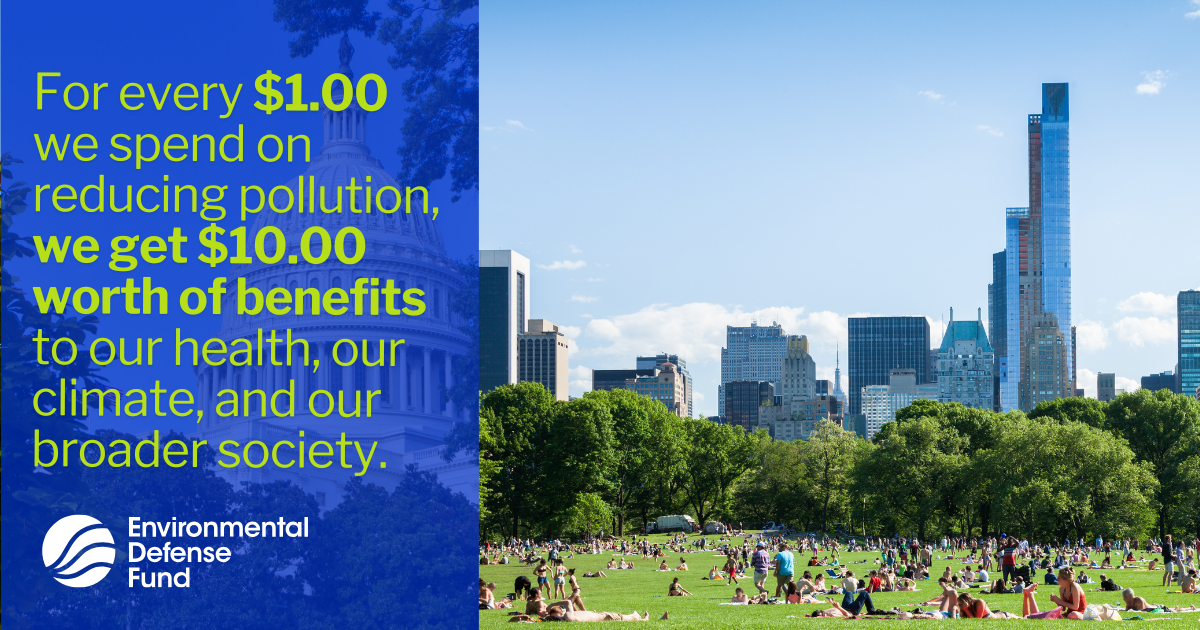How the Suspension of EPA Regulations Fails to Recognize the COVID-19 Crisis and Social Costs
COVID-19’s burden on healthcare systems worldwide, a mounting death toll, and the impacts this has on people across the globe is truly alarming. In addition to the public health crisis, the pandemic has also brought most countries’ economies to their knees. Governments are making decisions today that will resonate for decades for future generations, which is why interventions must be intelligent and forward-looking, while practical, rapid and cost-effective.
One of the macroeconomic aspects that has critical ramifications is determining what is deemed essential, in terms of jobs and services. Food, health care, and emergency services are clearly essential. And while policymakers can debate the merits of other positions, make no mistake, pollution monitoring and enforcement are also critical.
EPA’s Suspension of Enforcement
On March 26, EPA administrator Andrew Wheeler announced that the agency would suspend enforcement against violations of a broad set of environmental regulations, with no end date. This announcement effectively provides companies across the United States with a waiver from clean air and other public health protections, and has massive implications for human health at a time when keeping citizens healthy is paramount. We know air pollution causes diabetes, heart and lung diseases and worsens asthma, putting people at higher risk of severe effects of COVID-19. In fact, recent analyses find areas with high air pollution levels before this crisis reported higher COVID-19 death rates.
The naive expectation is that companies will continue to abide by the law and self-report any pollution amid the pandemic. This ignores well-established economics literature demonstrating how self-regulation does not work. Even if it is argued that reducing regulation will ease economic burdens at a time when it should be redirected for economic stimulus – that is also a fallacy that is undercut by the current administration’s analysis.
The Clear Benefits of Environmental Regulation
Every year, the Office of Management and Budget (OMB) performs a benefit-cost analysis (BCA) of all government agencies and federal rulings. The table below is taken from the most recent OMB report that did a thorough analysis and took a retrospective look over a 10 year period. [n.b, slated for release in 2017, this report was not made public until 2019. OMB only released one report during the Trump administration years, which was one-fifth of the length of previous ones, only did single-year BCAs, and was released two days before Christmas in 2019.]
Estimates of the Total Annual Benefits and Costs of Major Federal Rules (For Which Both Benefits and Costs Have Been Estimated) by Agency, October 1, 2006 – September 30, 2016 (billions of 2020 dollars). Sorted from best to worst Benefit-Cost Ratio, figures rounded to the nearest billion.
| Agency | # of Rules | Benefits | Costs | Benefit-Cost Ratio |
| 2020$ | 2020$ | |||
| Environmental Protection Agency (EPA) | 39 | 215 to 762 | 50 to 61 | 4.3 to 12.6 |
| Joint DOT and EPA | 4 | 49 to 86 | 12 to 22 | 4.2 to 3.9 |
| Department of Labor | 10 | 11 to 30 | 3 to 7 | 3.6 to 4.2 |
| Department of Health and Human Services | 18 | 7 to 35 | 2 to 7 | 3.1 to 5.0 |
| Department of Energy | 27 | 23 to 44 | 9 to 13 | 2.6 to 3.3 |
| Department of Transportation (DOT) | 27 | 25 to 45 | 9 to 17 | 2.6 to 2.6 |
| Department of Justice | 3 | 2 to 5 | 1 to 1 | 2.1 to 4.0 |
| Department of Agriculture | 5 | 1 to 2 | 1 to 1 | 1.2 to 1.4 |
| Department of Homeland Security | 4 | 1 to 2 | 1 to 1 | 0.8 to 1.6 |
The table above underscores the crucial role EPA regulations play in human health and benefits to society. For each dollar spent on EPA’s programs, Americans derive a $4-13 benefit in the form of improved livelihoods. In general, rules exhibiting the greatest benefit-cost ratio relate to air pollutants, which have a great deal of interplay in terms of at-risk populations for COVID-19 and associated respiratory impacts. An EPA report focusing on the Clean Air Act amendments of 1990 finds a central estimate of a 32$ return for each dollar invested. Critically, these analyses do not monetize all of the health benefits of regulations, and thus these figures likely undercount the true benefits to society (the costs, however, are much more certain).
In terms of their benefit-cost ratio, EPA and major environmental rules result in benefits to the public that far outweigh their costs to government and industry. These rules are designed to preserve and protect human life and ecosystems. Removing protections presents a tremendous social cost.
Of course, EPA’s ability to enforce regulations during a pandemic has its limits. We wouldn’t want to put anyone at risk of contracting coronavirus. Still, there are ways to continue enforcement. EPA could redesign monitoring initiatives to continue digitally in places where this isn’t already the case. But announcing a sweeping, indefinite suspension that ignores most of what we know from behavioral economics and human nature makes little sense.
While the future is full of uncertainty, and economic turmoil is already here, we need to think carefully and critically about how to best protect people, the environment, and avoid slipping into a deep recession. Removing EPA’s ability to provide health protections to society during a public health crisis is lunacy. Doing it in the name of cutting costs is entirely misguided, as each dollar taken away results in an additional $4 to $13 in social costs.












